Civil Defense Day. Emergency forces are always ready to help
Local Air Defense - a prototype civil defense forces
The history of the civil defense forces of the Russian Federation goes its past in the Soviet era. It was 4 of October 1932 that was approved by the Resolution of the Council of People's Commissars of the USSR “Regulations on air defense on the territory of the USSR”. This is how the local air defense of the USSR (MOPO of the USSR) appeared, which became the basis of the civil defense forces that were subsequently created. According to the “Provision on air defense on the territory of the USSR”, the duties of the USSR Defense Ministry forces included: warning the population about the threat of an air attack and warning that the threat had passed; the implementation of the masking of settlements and objects of the national economy from an attack from the air (especially blackout); elimination of the consequences of an air attack, including with the use of poisonous substances; preparation of bomb shelters and shelters for the population; the organization of the first medical and medical assistance to victims of an air attack; providing veterinary care to injured animals; maintaining public order and ensuring compliance with the regime established by the authorities and local anti-aircraft defense in threatened areas. Of course, the first attempts to create a civil defense system were made earlier - the defense of the country was responsible for protecting the population in the event of hostilities. In February, 1918 in Petrograd deployed not only anti-aircraft batteries and searchlight units, but also special points where people could, in case of danger, receive protective masks, anti-gas fluid and instructions with instructions for the necessary actions in case of poisoning with poisonous gases. At the same time, they began to teach those wishing to first-aid courses. However, the centralized civil defense system in Soviet Russia, and then in the Soviet Union, was absent until 1932.
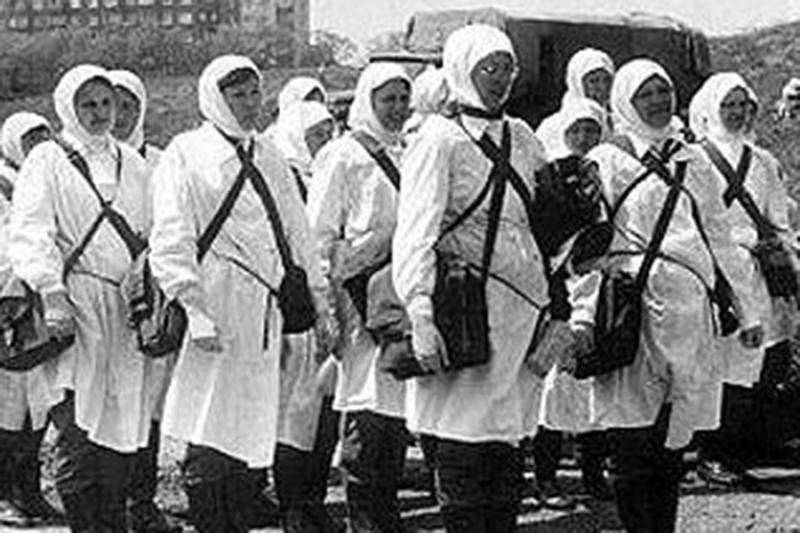
In the 1920s a nationwide air defense system was gradually developing, within the framework of which local air defense units, precinct and object teams, self-defense groups were created, which were formed according to territorial and production principles. In 1929, regional air defense headquarters were created, and in the military districts - air defense directorates. After the "Regulation on Air Defense in the USSR" was approved, the work began on the formation of units responsible not only for the air defense of cities and industrial facilities, but also for other areas of population protection during possible hostilities. The need for the formation of these units was due to the development aviation, including bomber, as well as the risk of using chemical poisons in case of war. In 1935, standards were passed for putting on the Ready for PVCO badge (air defense and chemical defense), and at the end of January 1937, the norms for the collective Ready for PVCO badge for residential buildings and primary organizations of Osoaviahima were established. As for the development of the organizational structure of the Local Air Defense of the USSR, it was carried out in two directions - military and civilian. In the main administrative and industrial centers of the Soviet Union, territorial air defense units were created — personnel separate battalions and regiments of local air defense. Also, precinct teams were organized, covering the population within police stations, field teams operating at enterprises, and self-defense groups covering households.
MPVO during the Great Patriotic
Almost ten years after the creation of a local air defense system, she had to test herself in action. The Great Patriotic War began. Against the enemy of our country, people of all sexes, ages and nationalities, different social status and occupation have united in one burst. Since the bulk of adult men and young adult boys were mobilized to the front, local air defense forces in Soviet cities were mainly women, teenagers, and older people. Note that by the beginning of 1941 in the USSR, more than 8 million people had been trained in air defense and chemical protection. Industrial enterprises had 25 thousands of local air defense units, and the number of shelters and shelters built allowed to place more than 20 million people. Only in 1940, at enterprises and at the place of residence, 131 thousand air defense and chemical defense training were conducted. Preparation of the population in these areas has become universal. By the fall of 1940, the local air defense system was even more streamlined. The forces of the USSR Defense Ministry were subordinated to the People's Commissariat of Internal Affairs of the USSR (NKVD of the USSR). At the regional and regional departments of the NKVD of the USSR, departments and local anti-aircraft defense departments were formed, and in the city and regional police departments, posts of senior inspectors for local air defense were introduced. The positions of chiefs of local air defense in most cases were assigned to the chairmen of the executive committees of the Soviet authorities. In May, the 1941 was streamlined at the normative level, the interaction of the Local Air Defense of the NKVD of the USSR and the Air Defense of the People's Commissariat of Defense (NPO) of the USSR. In accordance with the resolution of the USSR State Defense Committee, adopted in September 1941, after the start of the war, all male citizens of the USSR, aged from 16 to 50, were obliged to undergo compulsory basic training in air defense and chemical defense. Thus, the most powerful personnel reserve of territorial and production bodies of the MUP was created.
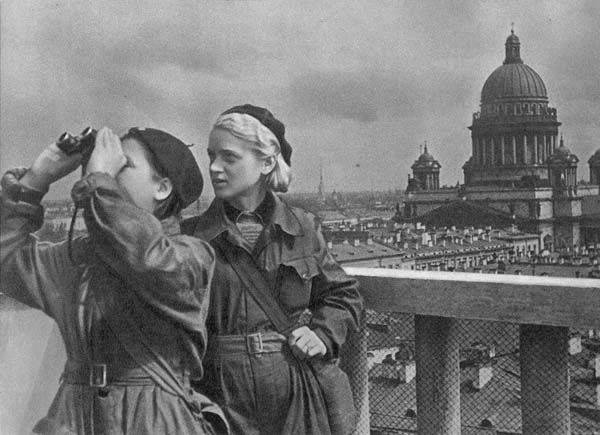
The units of the MoEH were tasked with organizing the shelter of the population in bomb shelters, extinguishing fires, evacuating the disabled population and assisting the victims of the bombings, training the population in using gas masks and ensuring the issuance of personal protective equipment, the burial of the bodies of the dead during the bombings, carrying out repair and restoration work and dismantling debris. In the liberated territories, the tasks of demining fields and structures were also assigned to the local air defense. The preparation of the population for air defense continued, which included practical training on building shelters, extinguishing incendiary air bombs and fires arising from them, providing first aid for injuries, burns and poisoning, using individual and collective chemical protective equipment. It is known that more than 100 million citizens of the Soviet Union were trained under the MPSE programs during the Second World War. In the years of the Great Patriotic War, despite the incompleteness of the formation of the system of anti-aircraft defense in the pre-war period, local air defense units showed their best, especially considering that their personnel mostly consisted of women, adolescents and pensioners. After the victory over the Nazi occupiers, the units of the USSR MOPO had a new responsible task - the restoration of destroyed enterprises, institutions, houses, transport and communications infrastructure. A major role of the Ministry of Air Defense played a role in the demining of cities and towns, infrastructure facilities in the territory under the authority of the occupiers. For this purpose, special pyrotechnic detachments were created as part of the MPO. The MPVO fighters participated in the reconstruction of the objects of the national economy and culture destroyed during the bombings and artillery shelling - schools, kindergartens, hospitals, museums and theaters, residential buildings, as well as sewage systems and electricity. At the same time, the local air defense forces were not exempt from their daily tasks to combat the consequences of natural disasters and catastrophes. Thus, the most important role of the MOPO forces was in the aftermath of the largest earthquake in the Turkmen SSR, which occurred on the night from 5 to 6 in October 1948. MNO forces conducted rescue and repair work at the site of the tragedy, made a great contribution to saving lives and restoration of the national economy destroyed during the earthquake of Soviet Turkmenistan.
New danger - nuclear weapons
Since in the first post-war period the need for the existence of such numerous formations of local air defense was reduced, their numbers in the second half of the 1940's. significantly reduced. But the preparation of the population under the air defense and chemical defense programs continued, also according to the territorial and production principle. Combat training was conducted mainly by the commanders of groups and commanders of units. All managers of agricultural and industrial enterprises were required to undergo training in local air defense programs. As a result of training, exercises on local air defense were held and tests were handed over. 31 October 1949. The USSR Council of Ministers approved the new “Regulations on the USSR MUP,” which defined the goals and tasks of the local air defense, its organizational structure, major events, the role and place of the MPVO troops, the MDP. interaction with other ministries and departments. The Ministry of Defense of the USSR was subordinated to the Ministry of the Interior of the Soviet Union. In May, the 1951 of the Main Directorate of Local Air Defense of the USSR Ministry of Internal Affairs was transformed into the Main Directorate of the local air defense service of the USSR Ministry of Internal Affairs. At the territorial level, the headquarters of the MNPP of cities and the bodies of the MNPP of the Ministry of Internal Affairs were transformed into the services of the MPVO of the Ministry of Internal Affairs. In April, 1956 was a new reorganization, in accordance with which the duties of the heads of local air defense on the ground were assigned to the chairmen of the executive committees of the Soviet government, heads of collective farms and state farms.
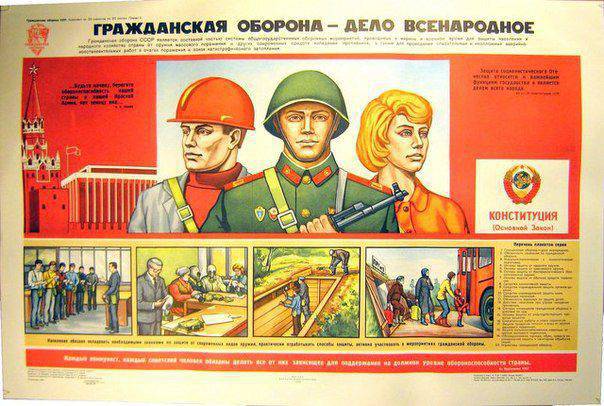
A new page in the history of civil defense opened with the emergence and development of nuclear missiles. Since ordinary citizens and local authorities were not ready for possible actions in the event of an enemy using nuclear missiles, the need to create a system to protect the population from weapons of mass destruction became urgent. The USSR leadership came to the conclusion that the existing local air defense system no longer responded to the changed conditions, since the lack of special facilities, the necessary training, the small number and local character of the measures taken did not allow the population to adequately prepare for action in the event of a nuclear missile strike. It took the improvement of methods, forces and means of ensuring the protection of the population and the national economy in the conditions of a probable nuclear-missile war. Therefore, in 1961, it was decided to create a new system for the protection of the population, the Civil Defense of the USSR, on the basis of the local air defense. Unlike the MOPO, the Civil Defense of the USSR was oriented, first of all, at protecting the population from a new threat — weapons of mass destruction. Also, the list of civil defense tasks included the provision of conditions for the functioning of the USSR industry in the war period, the provision of survivors of Soviet citizens in the event of a nuclear missile attack with food, clothing and medical supplies. In addition, the tasks of participating in the aftermath of the attacks on the Soviet Union, which now included the provision of assistance to hundreds of thousands of citizens, were significantly expanded. Finally, civil defense activities were defined as statewide and nationally, respectively, and the civil defense organization system, compared to the local air defense system, went to a fundamentally new organizational level.
The organization of the civil defense system of the Soviet Union took priority positions in the list of the country's priorities in the military sphere. The adopted Provision “On Civil Defense of the USSR” defined civil defense as a system of state defense measures carried out in advance in peacetime in order to protect the population and the national economy from nuclear, chemical, bacteriological weapons. It was emphasized that civil defense performs the tasks of rescue emergency recovery work in the affected areas. As for the structure of civil defense, it was also built on the territorial and production principles, reproducing the organizational model of its predecessor - the country's local air defense system. According to the concept of unacceptable damage, a defeat in a nuclear war could have occurred if 25-30% of the enemy’s population were destroyed and 50-70% of the industrial infrastructure in the country's key economic centers. Therefore, the civil defense forces were given the task of confronting such enemy plans and supporting an active air defense system.
USSR Civil Defense Troops
At the beginning of the 1970's continued development and improvement of the civil defense system, which, in the context of increasing the nuclear potential of the main opposing powers, became the most important strategic instrument of deterrence and balance. Changes in the global military-political situation demanded that appropriate adjustments be made in the organizational and functional structure of the USSR civil defense. First of all, civil defense was reassigned to the USSR Ministry of Defense. In the composition of the civil defense troops appeared the formation of increased readiness, civil defense regiments. They were assigned the tasks of taking measures to eliminate the consequences of emergency situations. Thus, in the summer of 1972, the Moscow Region was engulfed by peat and forest fires, which required a reorientation of civil defense to perform tasks not only during the war, but also in peacetime.
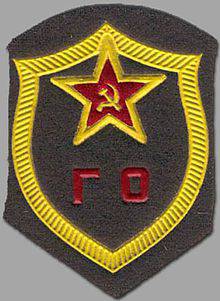 In 1974, the USSR Council of Ministers adopted a resolution “On the use in peacetime of non-military civil defense formations”, but the non-military civil defense forces for the most part did not have real capabilities to effectively prevent and combat the effects of emergency situations. Therefore, only civil defense forces could carry out real tasks in the framework of rescue and repair work. For the training of cadre officers of civil defense troops, the Moscow Military School of Civil Defense, located in Balashikha, was created back in 1967. The initiator of its creation was Marshal of the Soviet Union V.I. Chuikov, who occupied from 1961 to 1972. post of the head of the civil defense forces of the USSR. The school was created on the basis of the 147-th separate mechanized civil defense regiment and had a three-year training period. It was envisaged that the school would train officers in seven cycles: socio-economic disciplines, tactical and special tactical training, military engineering training, engineering machinery and equipment, communications, anti-radiation and anti-chemical protection, general education. Also, a battalion for accelerated training of junior lieutenants with a training period of 10 was formed in the school. Major General Nikolayev Oleg Petrovich was appointed the first head of the school, and Colonel G.G. Gromkov, head of the training department - Col. KM Yangalov, Deputy Head of the School - Colonel V.I. Belykh, who also continued to perform the duties of the commander of the 147 Mechanized Civil Defense Regiment, on the basis of which the school was established. 5 September 1969 was the first graduation school.
In 1974, the USSR Council of Ministers adopted a resolution “On the use in peacetime of non-military civil defense formations”, but the non-military civil defense forces for the most part did not have real capabilities to effectively prevent and combat the effects of emergency situations. Therefore, only civil defense forces could carry out real tasks in the framework of rescue and repair work. For the training of cadre officers of civil defense troops, the Moscow Military School of Civil Defense, located in Balashikha, was created back in 1967. The initiator of its creation was Marshal of the Soviet Union V.I. Chuikov, who occupied from 1961 to 1972. post of the head of the civil defense forces of the USSR. The school was created on the basis of the 147-th separate mechanized civil defense regiment and had a three-year training period. It was envisaged that the school would train officers in seven cycles: socio-economic disciplines, tactical and special tactical training, military engineering training, engineering machinery and equipment, communications, anti-radiation and anti-chemical protection, general education. Also, a battalion for accelerated training of junior lieutenants with a training period of 10 was formed in the school. Major General Nikolayev Oleg Petrovich was appointed the first head of the school, and Colonel G.G. Gromkov, head of the training department - Col. KM Yangalov, Deputy Head of the School - Colonel V.I. Belykh, who also continued to perform the duties of the commander of the 147 Mechanized Civil Defense Regiment, on the basis of which the school was established. 5 September 1969 was the first graduation school. However, in 1974, due to the lack of trained commanders of the road troops, the USSR Military Department of the Ministry of Defense of the Moscow Civil Defense School was transformed into the Moscow Higher Command School of Road and Engineering Troops. The training period was extended to four years, and the Faculty of Railway Engineers (Road Workers) was transferred here from the Kamyanets-Podilsky Higher Command School of Engineering Troops. In this capacity, the school existed until 1994, in 1994-1996. The Moscow Higher Military Road Engineering School was called, and in 1996 it was renamed the Military Technical University. It was at the Moscow Higher Command School of Road and Engineering Troops that they continued to train cadres for the USSR Civil Defense Forces after renaming the school to 1974. Many graduates of this school went through “hot spots” - Afghanistan, Chechnya, other conflicts in the post-Soviet space, participated in liquidation of the consequences of the accident at the Chernobyl nuclear power plant, other man-made and natural disasters on the territory of the Russian Federation and other countries.
The most serious test for the civil defense troops of the USSR was the accident at the Chernobyl nuclear power plant in 1986. The fire brigade, the RCBZ troops, the Civil Defense troops, and the military construction units bore the brunt of eliminating the consequences of this terrible catastrophe. The most difficult tasks were assigned to the operational grouping of troops of the USSR Ministry of Defense, numbering 40 thousands of servicemen and including chemical, engineering troops and civil defense units of the USSR. In the group of troops in Chernobyl, focused on the elimination of the consequences of the accident, 40-44% accounted for chemical troops, 28-32% - for civil defense forces, 8% - for engineering troops, 10% - for military units and rear units, 7 -9% - on the part of the technical support, 4-6% - on the communications troops, air force, etc. Nine separate mechanized civil defense regiments and one separate battalion of special civil defense protection that was deployed to Chernobyl and its environs took part directly in the aftermath of the accident. In total, it is more than 5,5 of thousands of soldiers, sergeants, warrant officers and officers, 1500 units of special equipment. In addition, the non-militarized formations of the USSR Civil Defense totaling thousands of people in 6 and 500 units of special equipment participated in the aftermath of the accident. The Civil Defense and Chemical Forces units carried out radiation reconnaissance and radiation monitoring in the accident zone. In the thirty-kilometer zone around the nuclear power plant, radiation reconnaissance was carried out by civil defense and chemical troops, and outside the thirty-kilometer zone, non-military civil defense units of the USSR. It was in Chernobyl that the experience of the operation of “dual subordination” units — units of chemical and engineering troops transferred to operational control of the USSR Civil Defense Head — was tested for the first time. One of the first to be sent to Chernobyl from the village of Dinskoy, Krasnodar Territory was the 955 th separate mechanized civil defense regiment. “We worked in the conditions of twenty five-degree heat, by the end of the day we were exhausted from fatigue. Some, fearing radiation, were looking for reasons to leave Chernobyl ahead of time. A special commission was created, an inspection was carried out. Find out the truth of the motives. But the majority performed their duty, as befits officers, ”recalls the commander of the mechanized battalion of the 955 mechanized civil defense regiment Alexander Naumov, recalling a participant in the liquidation of the accident at the Chernobyl nuclear power plant (Tsit. by: http://xnumx.mchs.gov.ru/folder/23). The 955-th mechanized civil defense regiment participated in the work on liquidation of the consequences of the Chernobyl accident from May 1986 to October 1988. During this time, the personnel who served in Chernobyl changed several times. The regiment was the only formation of the USSR Civil Defense Forces, awarded as a result of work in the accident zone of the pennant "For courage and valor" by the Minister of Defense of the Soviet Union. Before the Chernobyl accident, only combat units received this high award.
Reforming the system of civil defense
The troops and civil defense forces of the USSR heroically showed themselves during the aftermath of the accident at the Chernobyl nuclear power plant. However, at the same time, the Chernobyl disaster revealed many weaknesses in the organization of the civil defense system in the Soviet Union. The fact is that for several decades after the war, the Civil Defense of the USSR was viewed, first of all, as a structure designed to organize the defense of the country in the event of war against weapons of mass destruction. The actions of the units and troops of the Civil Defense of the USSR in peacetime were practically not worked out, which later affected Chernobyl. The elimination of emergency situations in the list of tasks of the USSR Civil Defense was in secondary positions, and meanwhile, in the face of reducing the risks of nuclear war, it became the most significant for the organization of an effective civil defense system.
Problems in the organization of civil defense were outlined long before the Chernobyl accident, but the Soviet leadership chose to find one "culprit" who could be blamed for all the shortcomings and mistakes. He was the head of the Civil Defense of the USSR Hero of the Soviet Union, Army General Alexander Terentyevich Altunin (1921-1989) - a veteran of World War II, who received a gold star when he was captain, commander of a rifle battalion for the heroic forty-day defense of the bridgehead against the Nazis in Poland. General Altunin was removed from his post and sent as a military adviser to the Group of General Inspectors of the USSR Ministry of Defense. As head of the USSR Civil Defense, he was replaced by General of the Army Vladimir Leonidovich Govorov (1924-2006), who had previously held the post of Chief Inspector of the USSR Ministry of Defense. It was under the leadership of General of the Army Govorov that the gradual transformation of civil defense troops into a modern structure began, which later became the basis for the formation of the Russian Emergencies Ministry. According to the analysis of events in Chernobyl 30 July 1987. It was adopted Resolution of the Central Committee of the CPSU and the Council of Ministers of the USSR No. 866213 "On measures for a radical restructuring of the civil defense system." Modernization of the structure and functions of civil defense has been brewing for a long time, and not only in the context of the Chernobyl accident. The development of chemical industry, nuclear energy, new technologies increased the risks of man-made disasters and necessitated the improvement of the system of protection of the population during emergency situations. Each GO headquarters was ordered to have two operational civil defense plans - in case of war and in case of emergency situations in peacetime. The civil defense headquarters in the republics, regions, territories, on the territory of which the objects of dangerous atomic and chemical production were located, should have a strengthened structure, which allowed them to promptly and effectively respond to possible man-made risks. There have been changes in the construction of protective structures, providing the population with personal protective equipment. At the enterprises of the nuclear and chemical industry, personal protective equipment was supposed to be placed directly in the workplaces of personnel, and in residential areas adjacent to hazardous facilities - in apartments of the population. Thus, the civil defense system was reoriented to work mainly in peacetime, aimed at eliminating the consequences of emergency situations and saving the population in conditions of man-made and natural disasters. The role of the earthquake in the city of Spitak in the Armenian SSR in 1988 It was after this earthquake that the accelerated creation of rescue units began. So, July 17 1990 it was decided to form the Russian rescue corps (RCS), and 27 December 1990, The Russian corps of rescuers was created. 17 April 1991 city Sergei Shoigu was appointed head of the Russian rescue corps, who previously held the position of deputy chairman of the RSFSR State Committee for Architecture and Construction.
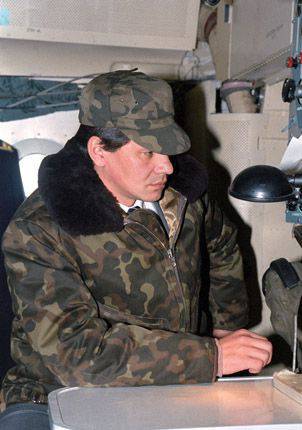 18 November 1991 on the basis of the State Commission for Emergency Situations under the Council of Ministers of the RSFSR and the Civil Defense Headquarters of the RSFSR, the State Committee for Civil Defense, Emergencies and Elimination of Consequences was established under the President of the RSFSR. It was the beginning of the creation of a modern Russian system of protection of the population from emergency situations caused by military, man-made and natural causes. After the collapse of the Soviet Union, the strengthening of the civil defense system continued within the framework of the Russian state. 8 May 1993, the President of the Russian Federation B.N. Yeltsin signed the Decree “On Civil Defense”, in accordance with which the overall leadership of civil defense in the Russian Federation was assigned to the Chairman of the Government of the Russian Federation, who became head of the civil defense of the country. The first deputy prime minister - the head of the Civil Defense of the Russian Federation became the chairman of the State Committee for Emergency Situations (EMERCOM). According to the same scheme, a civil defense system was also organized at the regional level, in enterprises and institutions.
18 November 1991 on the basis of the State Commission for Emergency Situations under the Council of Ministers of the RSFSR and the Civil Defense Headquarters of the RSFSR, the State Committee for Civil Defense, Emergencies and Elimination of Consequences was established under the President of the RSFSR. It was the beginning of the creation of a modern Russian system of protection of the population from emergency situations caused by military, man-made and natural causes. After the collapse of the Soviet Union, the strengthening of the civil defense system continued within the framework of the Russian state. 8 May 1993, the President of the Russian Federation B.N. Yeltsin signed the Decree “On Civil Defense”, in accordance with which the overall leadership of civil defense in the Russian Federation was assigned to the Chairman of the Government of the Russian Federation, who became head of the civil defense of the country. The first deputy prime minister - the head of the Civil Defense of the Russian Federation became the chairman of the State Committee for Emergency Situations (EMERCOM). According to the same scheme, a civil defense system was also organized at the regional level, in enterprises and institutions. EMERCOM of Russia: from the GO troops to the rescue forces
10 January 1994. The RF State Committee for Civil Defense, Emergencies and Disaster Relief was transformed into the Ministry of the Russian Federation for Civil Defense, Emergencies and Disaster Relief (EMERCOM of Russia). Major General Sergei Shoigu was appointed First Minister for Emergency Situations (Sergey Shoigu was given the rank of general in 1993). For two decades, Sergei Shoigu managed to create a highly professional and effective agency - unique in its kind. Gradually, the EMERCOM of the Russian Federation significantly expanded its functions, since 1 in January 2002 was included in the Ministry of Emergency Situations the State Fire Service, formerly part of the Ministry of Internal Affairs of the Russian Federation. Joining the “firefighters” to the “rescuers” allowed to increase the number of EMERCOM, which previously reached only 70 thousands of employees and military personnel, by another 278 thousand people - just as many people served to 2002 in the units of the State Fire Service. From the moment of its creation, the civil defense troops were subordinate to the Emergencies Ministry of the Russian Federation. Now they were entrusted with, first of all, the tasks of conducting rescue and repair work in wartime and in peacetime. The following important tasks were assigned to the civil defense forces of the Ministry of Emergency Situations: implementation of general and special reconnaissance in the affected areas, areas of contamination (pollution) and catastrophic flooding, as well as on the routes to their advancement; conducting emergency and rescue and other urgent work in the course of liquidation of emergency situations (threats of emergency situations) of natural and man-made character, ensuring the process of entering other forces into the zones of contamination and catastrophic flooding; organization of sanitary processing of the population, special processing of equipment and property, disinfection of buildings, structures and territory; pyrotechnic works; organization of events for the evacuation of the population and its primary life support; organization and participation in the work on the restoration of life support facilities for the population, airfields, roads, crossings and other important elements of the rear infrastructure.
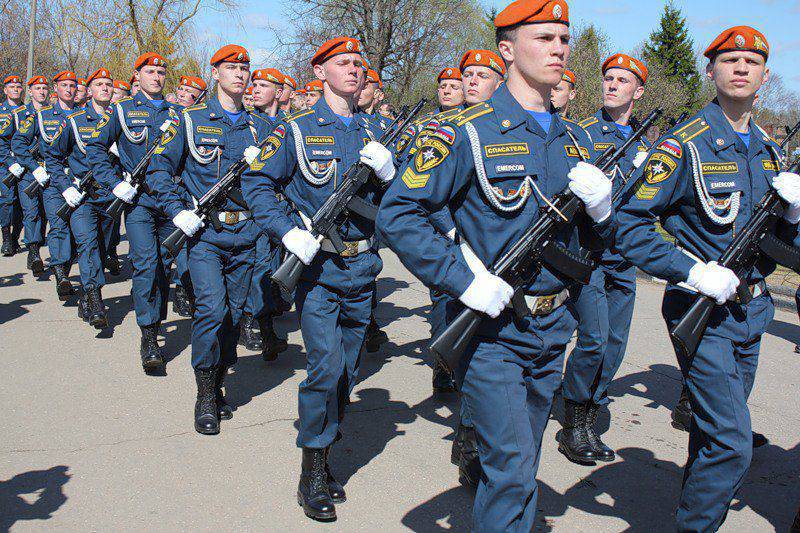
At the end of 1990-x - the beginning of 2000-x. the reform of civil defense forces began, which continued in parallel with their development and improvement and took almost a decade. In 1999-2003 The individual civil defense brigades, formerly the main structural unit of the civil defense forces, were transformed into rescue centers of the Russian Emergencies Ministry. Based on the name, rescue and evacuation work became the main profile of the activities of the Ministry of Emergency Situations. In January, 2009, the President of the Russian Federation, instructed to reorganize the country's civil defense troops into permanent-readiness rescue military units. In July, 2010, a law proposed by parliamentarians on the reorganization of civil defense troops into rescue troops of constant readiness was approved by the Federation Council of the Russian Federation. In accordance with the law, provision was made for the creation of nine permanent-readiness military rescue units, seven of which were to be established at the regional centers of the Emergencies Ministry, and two were stationed in Moscow. In accordance with the Decree of the President of the Russian Federation No. 30.09.2011 on 1265 “On rescue military units of the Ministry of the Russian Federation for Civil Defense, Emergencies and Disaster Relief”, the civil defense forces of the Emergencies Ministry of the Russian Federation were reorganized into rescue military units of the Emergencies Ministry. In accordance with the law, the general leadership of the rescue military formations of the Emergency Situations Ministry of the Russian Federation is exercised by the President of the Russian Federation as the Supreme Commander, and the direct management of the rescue military formations is in the hands of the Minister for Emergency Situations. The decree on the creation of rescue military formations of the Ministry of Emergency Situations (SVF MES) provided for the main objectives of the units of the SVF of the Emergencies Ministry in peacetime and in wartime, in emergency situations. It is emphasized that the rescue military formations of the Emergencies Ministry "are designed to protect the population and territories, material and cultural values from the dangers arising from the conduct of hostilities or as a result of these actions, as well as in the event of natural and man-made emergencies, including Of the Russian Federation are an integral part of civil defense forces ”(http://www.mchs.gov.ru/).
For two decades of existence of the Ministry of Emergency Situations of the Russian Federation, the military personnel of the Ministry of Emergency Situations had not only to participate in the aftermath of natural and man-made emergencies, but also to visit “hot spots” - both in Russia and in other post-Soviet republics and even “far abroad” - Afghanistan, Tajikistan, Transnistria, Abkhazia, Yugoslavia, Chechnya, South and North Ossetia. For several years alone, rescue military units of the Russian Emergencies Ministry took part in more than 150 000 rescue operations in Russia. During 10 years, civil defense troops more than 40 thousands of times participated in the aftermath of various accidents and disasters of technological, natural and military nature, rescued more than 70 thousands of Russian and foreign citizens. Unfortunately, it does not do without losses, which the “soldier of the world” also has combat. The Emergencies Ministry troops have long earned the respect and sympathy of Russian citizens - like real defenders of the people and the state. On a professional holiday, it remains to wish the personnel of the rescue military units of the Emergencies Ministry of the Russian Federation to continue with honor, and without loss, to bear their difficult service, for which the soldiers of the Emergencies Ministry are guaranteed the honor and respect of Russian citizens.
Information